Campanula Bellflowers: Complete Care And Growing Guide For Healthy and Vibrant Blooms
Campanula, or bellflower, is a popular bedding plant that features bell- or star-shaped flowers. These delicate beauties will help add interest to any garden.
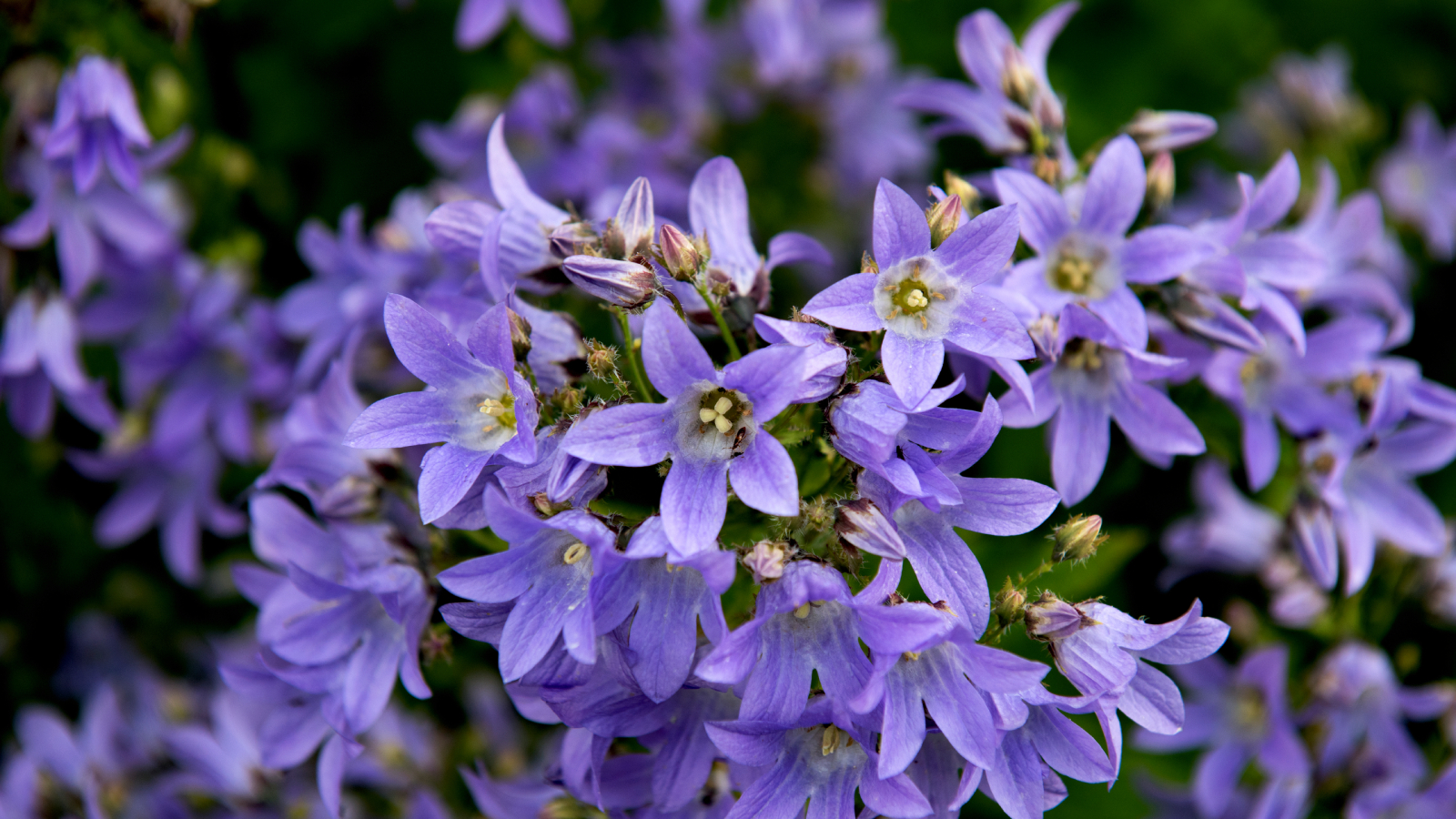
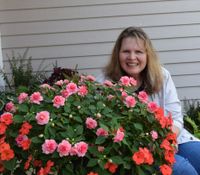
Quick Facts
Botanical name: Campanula spp.
Height: 3 inches to 6 feet (8 cm. to 1.8 m.)
Spread: 6 inches to 3 feet (15 cm. to 0.9 m.)
Sun exposure: Sun to part sun to shade
Soil requirements: Well-drained soil
Hardiness zones: USDA zones 3-9
When to plant: Spring
Campanula bellflowers encompass a wide range of flowering biennials and perennials that are suitable for borders, cottage gardens, rock gardens, and containers. The more than 300 species feature bell- or star-shaped flowers, often dangling from tall spikes or greeting onlookers from a low mat. Purple and blue are the prominent colors but pink and white are also available.
These low-maintenance plants attract scores of pollinators, and many species are deer resistant. They thrive in cool summers so if you live in a warm area, plant your bellflowers where they will receive afternoon shade.
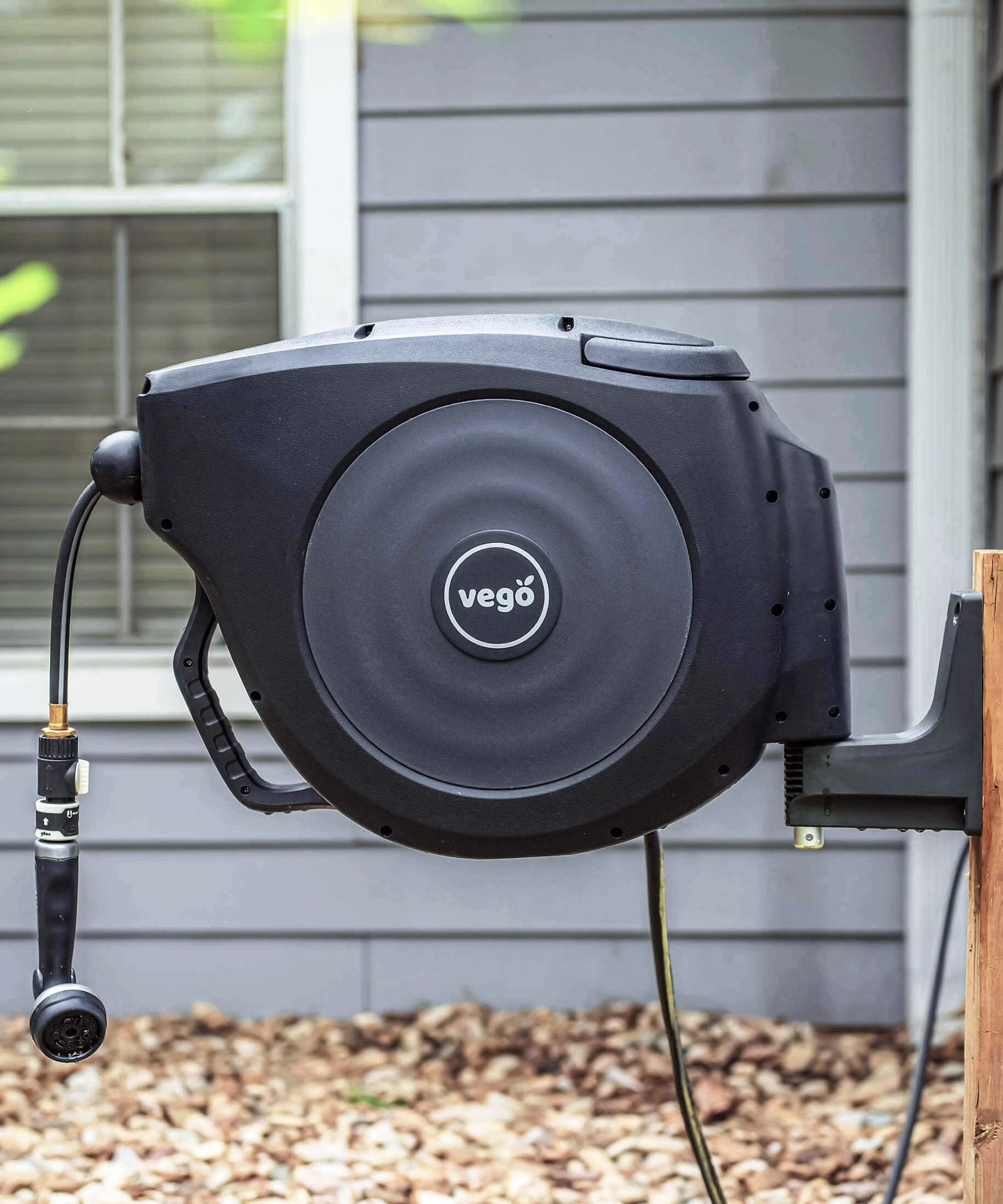
The retractable hose reel set comes with everything you need to water with ease and banish tangled hoses forever. Shop for hoses in the Gardening Know How Shop.
Care Of Campanula Bellflowers
Bellflower varieties vary in the care they need, but here are general guidelines to follow. Be sure to research the variety/cultivar you choose to be certain it grows in optimum conditions.
Light
Most types of bellflowers will thrive in full sun. If you live in a warm zone, plant your bellflowers in part shade. Some woodland varieties are shade-loving wildflowers and will require dappled shade or full shade.
Water
Campanula flowers prefer moist soil though some varieties can tolerate drought. Water when the top inch of soil begins to dry out. Keep the soil mulched to conserve moisture.
Temperature & Humidity
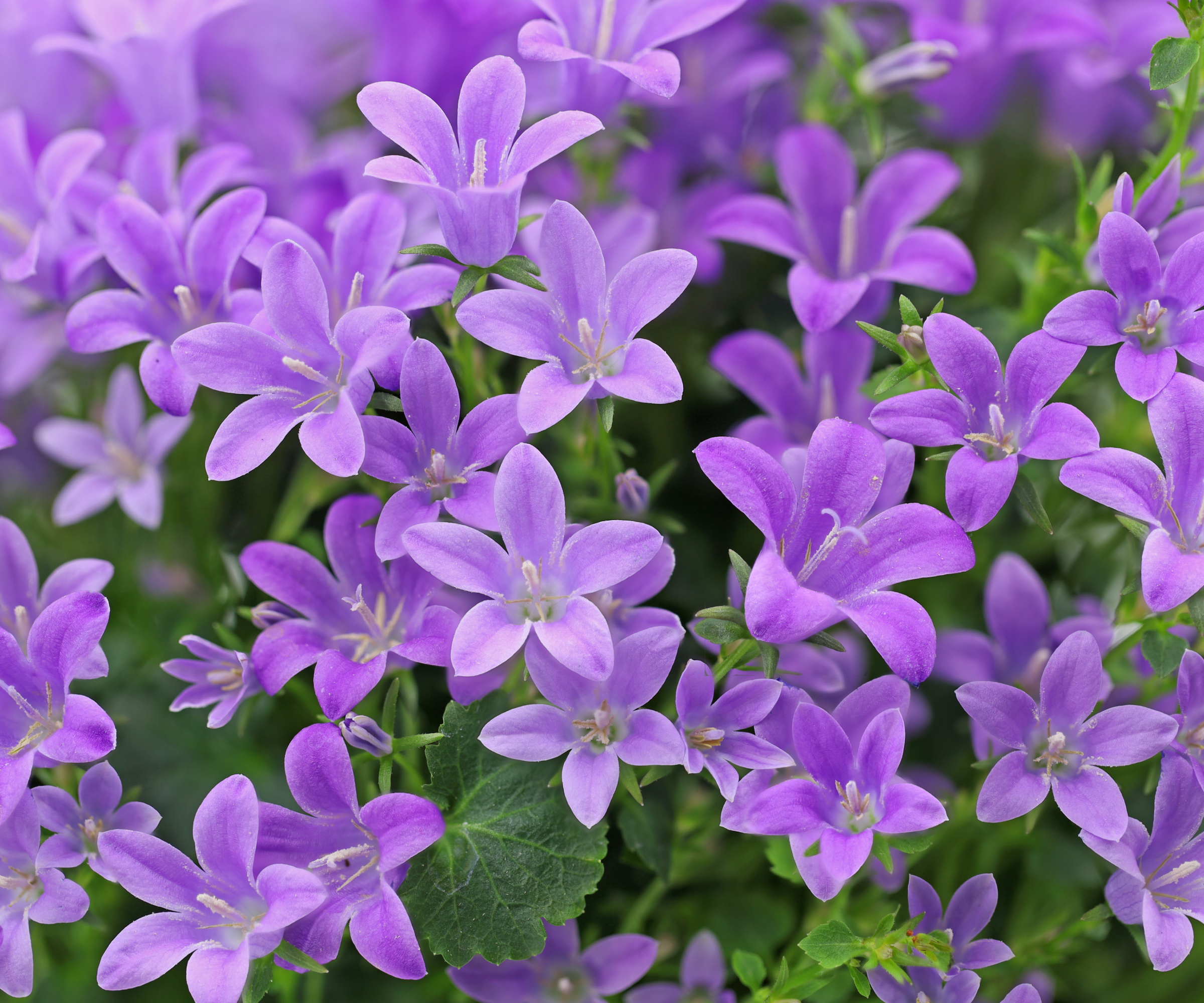
Bellflowers typically prefer mild temperatures - warm during the day but cooler at night, preferably below 70 degrees F. Bellflowers won’t last long in areas with high humidity and high nighttime temperatures.
Soil
Campanula prefers fertile soil so enrich the soil with compost or manure at planting time. It is essential that the soil is well drained or the plant may rot. Bellflower is not too picky about soil pH so neutral (6.0 to 8.0) works fine.
Sign up for the Gardening Know How newsletter today and receive a free copy of our e-book "How to Grow Delicious Tomatoes".
Fertilizer
In the spring, nourish bellflowers with a balanced 10-10-10 fertilizer or side dress the plants with compost or manure.
Problems, Pests & Diseases
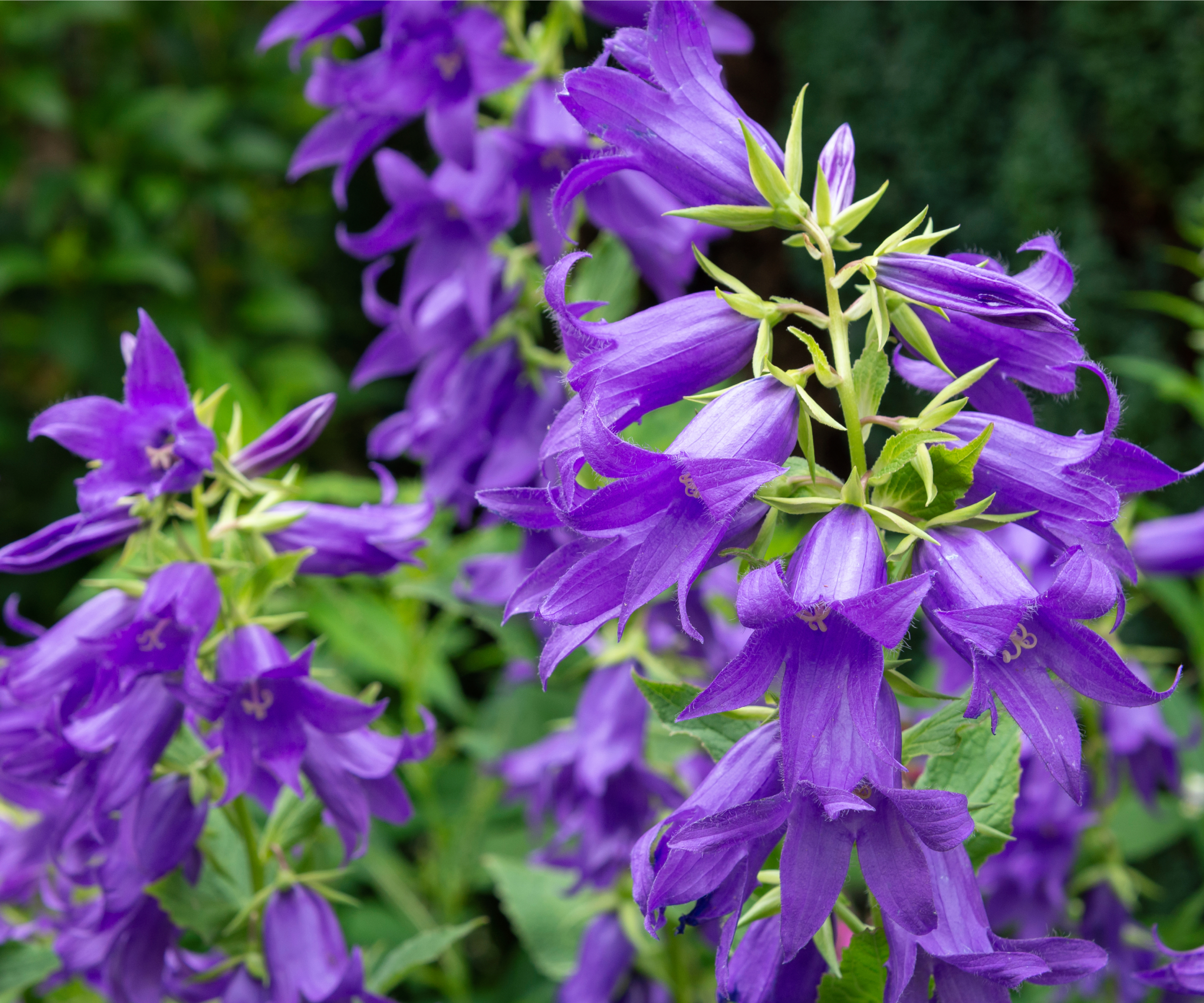
Bellflower is usually disease and pest free but may be bothered by some of the usual suspects - aphids, slugs, spider mites, white flies or rust disease. Neem oil can be applied weekly until control is achieved on pests. For rust on leaves, remove the affected leaves and discard in the trash. Slugs can be controlled with a simple slug trap or diatomaceous earth.
Pruning
Pruning tips vary with the type of bellflower, but generally, removing spent blooms will prolong flowering. Remove the spent flowers carefully so as not to disturb the buds below. In the fall or spring, cut the stalks down to the basal foliage. If you want the plant to reseed, do not remove all the spent blooms. Allow a few plants to go to seed.
Propagation
Many of the varieties will self sow or increase by rhizomes. You can propagate bellflowers by seed, division or stem cuttings.
Repotting
Plants in containers can be repotted when roots show at the top. Remove the plants from the container and remove as much of the soil as possible. Clean the container and refill with fresh soil and repot. If the plants have increased and you are not dividing it, move the pot size up one or two sizes before replanting.
Varieties
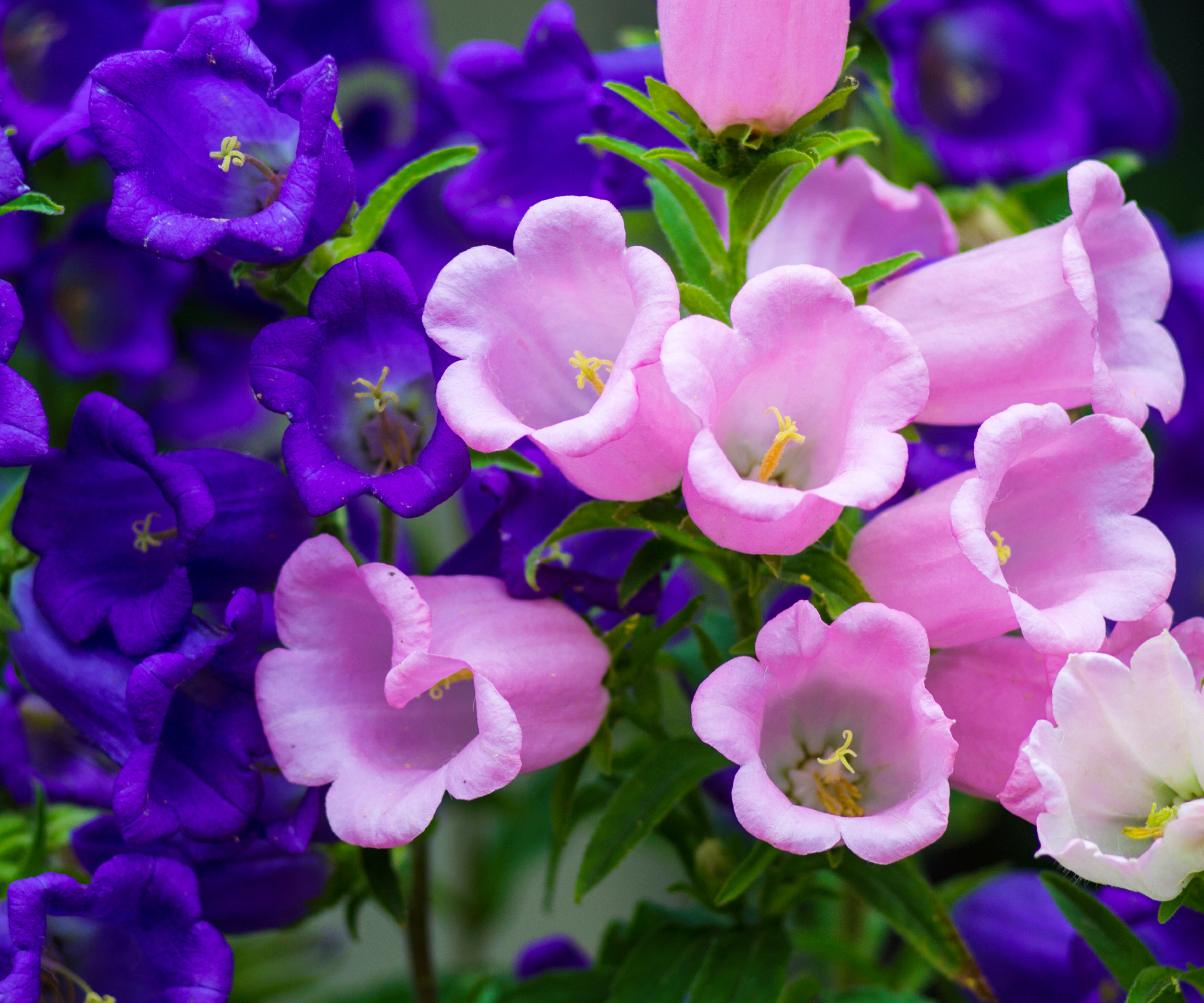
Campanula varieties are quite diverse in appearance and culture. There are purples, whites, pinks, blues. There are tall bellflowers and low groundcover bellflowers. Some are perennials and others are annuals. Some love full sun and others thrive in shade. There really is a bellflower variety for every garden. Here are a few of out favorites.
- Campanula americana (American bellflower) is a native, woodland species that prefers dappled shade and rich, moist soil. Tall stems are lined with lavender, star-shaped flowers.
- Campanula medium (Canterbury bells) prefers moist, fertile soil in full to part sun. Tall stems on this biennial produce cup-and-saucer shaped flowers. “Champion’ has blue or pink flowers. ‘Double Melton Bells’ has double flowers in dark or pale pink or purple flowers.
- Campanula rotundifolia (Bluebell bellflower) displays bell-shaped, blue flowers on tall, thin stems that bloom all summer. Grow in sandy, well-drained soil.
- Campanula saxifraga (Bellflower) is a compact groundcover that grows 4 to 6 inches (10 to 15 cm.) tall with bell-shaped, blue-purple flowers. Requires well-draining, moist soil.
- Campanula ‘Pink Octopus’ is an unusual bellflower with long, thin petals in flower pclusters that look like pink octopuses. It prefers full to part sun in moist, but well-draining soil.
Frequently Asked Questions
When is best to plant Campanula?
Plant bellflower in spring, but if you are planting seeds, check to see if the variety you chose needs to be planted in fall to allow for cold stratification.
Does Campanula spread aggressively?
Some species can spread quickly by seeds and rhizomes and may become invasive. Research the variety you want to plant before you buy it. One variety, creeping bellflower (Campanula rapunculoides) is invasive in the Midwest. It reproduces by a network of thick roots as well as seeds.
This article features products available from third-party vendors in the Gardening Know How Shop.
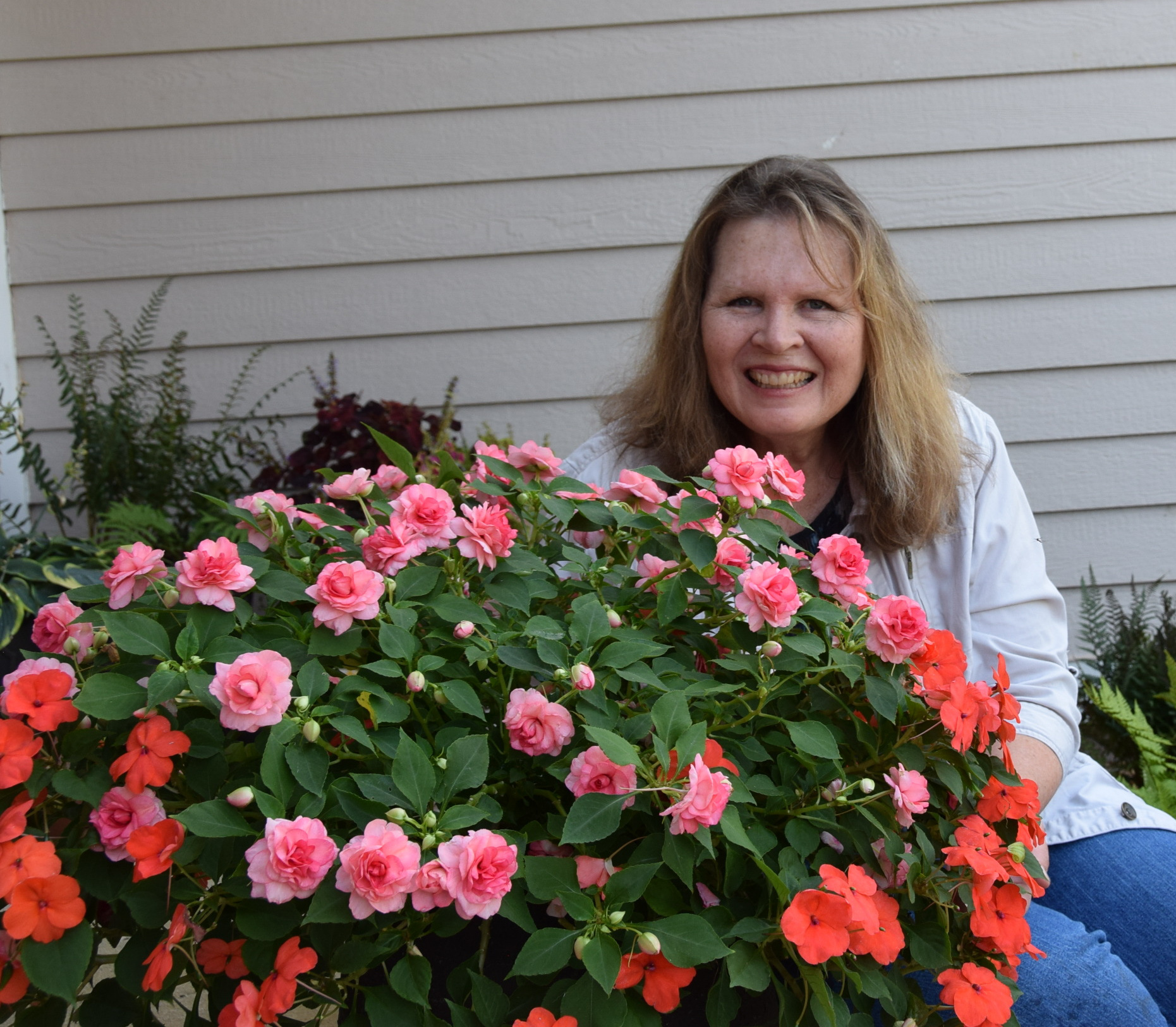
After graduating from Oklahoma State University with a degree in English, Susan pursued a career in communications. In addition, she wrote garden articles for magazines and authored a newspaper gardening column for many years. She contributed South-Central regional gardening columns for four years to Lowes.com. While living in Oklahoma, she served as a master gardener for 17 years.